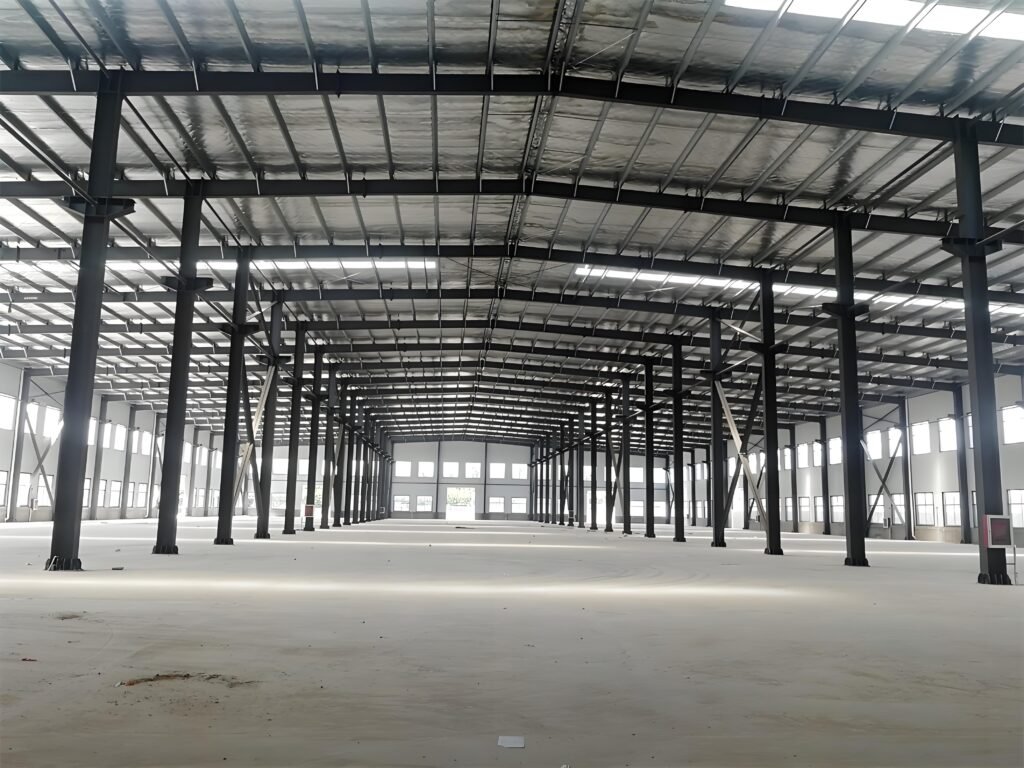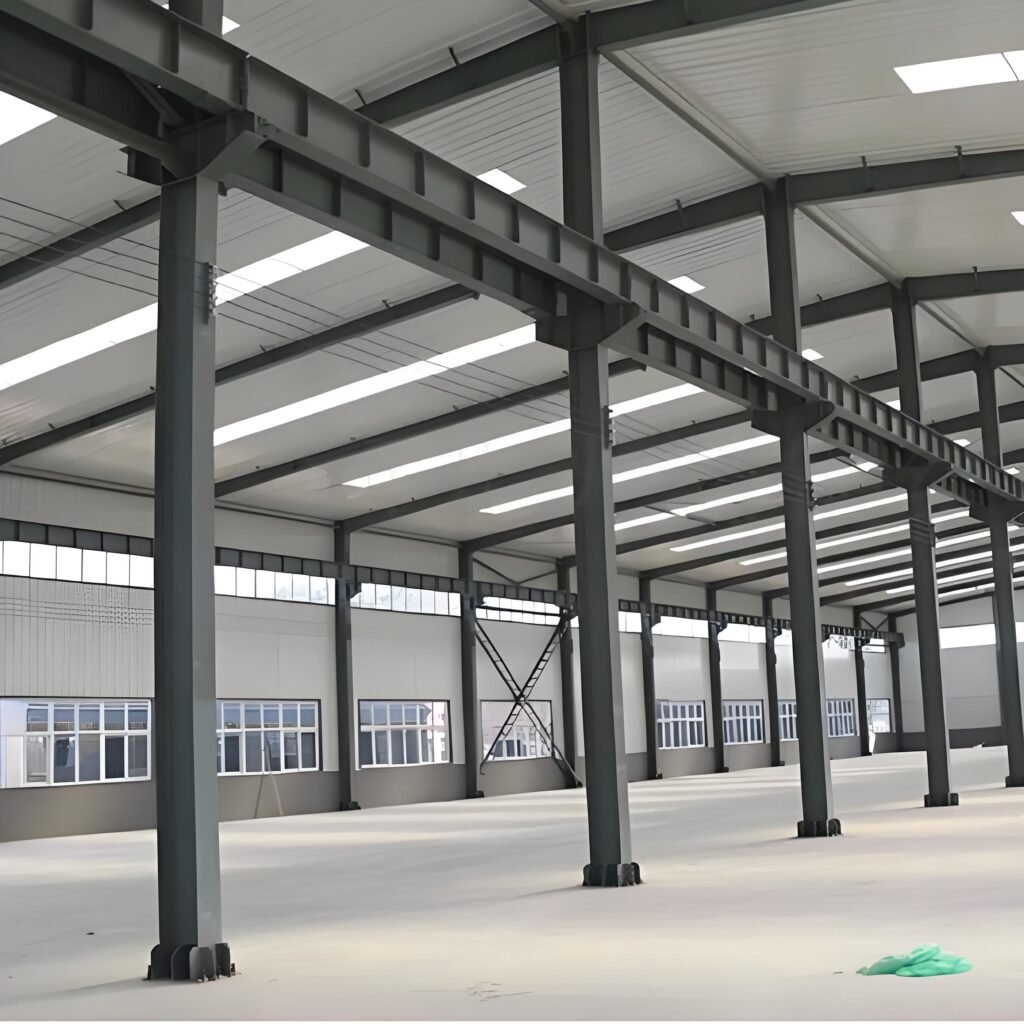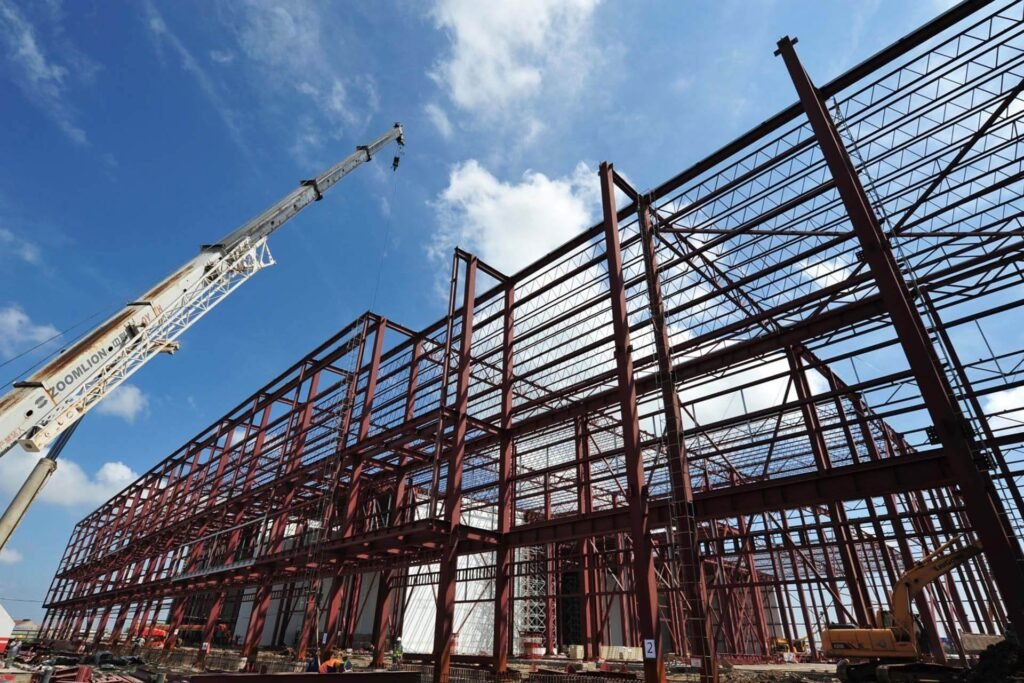- What Is A Truss Steel Structure ?
- How Does A Truss Steel Structure Work?
- What Are Benefits of A Truss Steel Structure?
- How To Choose Right A Truss Steel Structure?
- Summary
1. What Is A Truss Steel Structure?
A truss steel structure is a framework made up of triangular units, which are connected by straight members. These members are typically made from steel, which is known for its high strength-to-weight ratio. The primary purpose of a truss is to distribute loads (such as weight or forces) across a wide area without requiring a large amount of material. Trusses are used in various applications, including bridges, roofs, and towers.
2. How Does A Truss Steel Structure Work?
A truss steel structure works by utilizing the principle of triangular geometry. The load is applied at the joints or nodes, and each individual member (usually referred to as a “beam” or “rod”) carries either tension or compression forces. The triangular design allows the structure to evenly distribute forces, making it stable and strong without needing excessive material.
When a load is applied, the forces are transferred through the truss’s triangular sections, which efficiently carry the force to the supports at the ends of the truss. This makes the truss an extremely efficient design, especially for large spans.

3. What Are the Benefits of A Truss Steel Structure?
3.1 Strength-to-weight ratio Steel has an excellent strength-to-weight ratio, meaning that steel trusses can carry heavy loads while using minimal material.
3.2 Efficiency The triangular design of a truss distributes the load evenly, minimizing the amount of material needed and reducing costs.
3.3 Versatility: Trusses can be adapted for various designs and applications, from bridges to roofs to towers.
3.4 Long Span Capability: Truss structures are ideal for large spans because they distribute the forces effectively, allowing for wide-open spaces without the need for additional supports.
3.5 Durability: Steel is resistant to the elements, making steel trusses ideal for outdoor use or in harsh environments.

4. How To Choose The Right Truss Steel Structure?
When choosing a truss steel structure, several factors need to be considered:
4.1 Load Requirements
What kind of load will the truss be supporting? (e.g., dead load, live load, environmental forces)
Understand the magnitude and type of load to ensure the truss will bear the weight safely.
4.2 Span Length
Determine the distance the truss needs to cover. Larger spans generally require more robust trusses or advanced materials to maintain strength and stability.
4.3 Design Type
There are various truss designs (e.g., Pratt, Warren, Howe), each with its own structural advantages. For example:
4.4Pratt truss More efficient for compressive forces.
4.5 Warren truss Often used for bridges and long spans due to its ability to evenly distribute forces.
4.6 How truss Works well for shorter spans and residential applications.
4.6.1. Material Quality
Ensure the steel is of high quality to prevent rusting and degradation over time. Look for materials with protective coatings (like galvanized steel) to enhance durability.
4.6.2. Cost
Consider the cost of materials and fabrication. While steel trusses are often more cost-effective than other structures, the complexity of design and span can influence price.
4.6.3 Maintenance and Durability
Look into the maintenance required for the truss. Steel, while durable, can still require upkeep, especially in corrosive environments. Ensure proper coatings or treatments are included.
4.6.4 Building Codes and Regulations
Always check local building codes to ensure that the truss structure complies with safety and regulatory standards.
5. Summary
A truss steel structure is a type of framework made from triangular units that efficiently distribute loads across large spans. Its strength-to-weight ratio makes it ideal for applications that require high durability and load-bearing capacity, such as bridges and roofs. To choose the right truss steel structure, consider factors like load requirements, span length, design type, material quality, cost, and compliance with building codes. When selected correctly, trusses offer a reliable, efficient, and cost-effective solution for many construction needs.
Contact Zhuohang now to obtain customized one-stop steel frame building construction solutions and jointly create a more resilient urban future!

